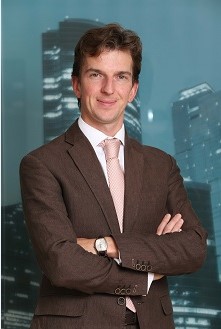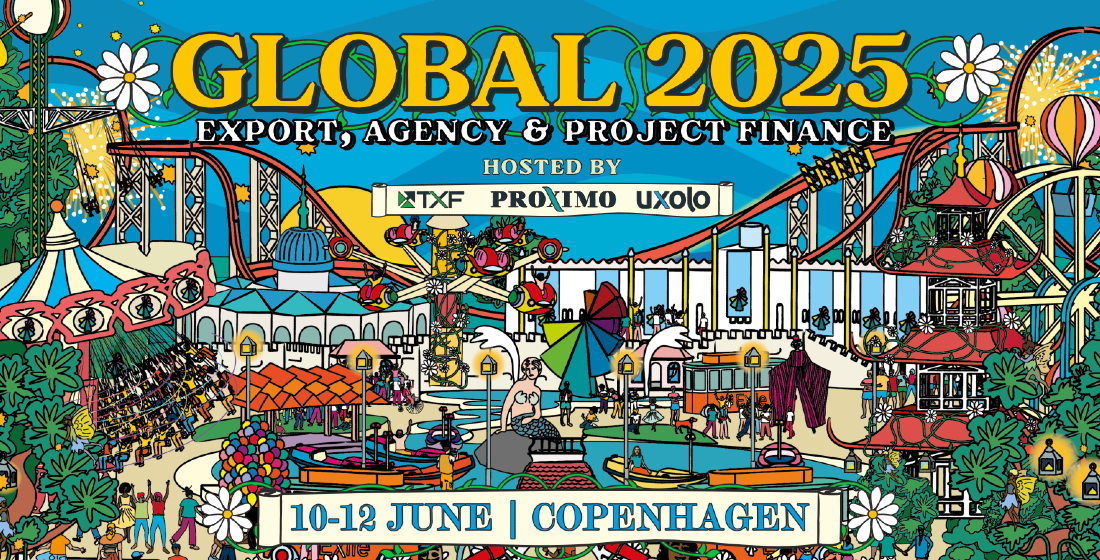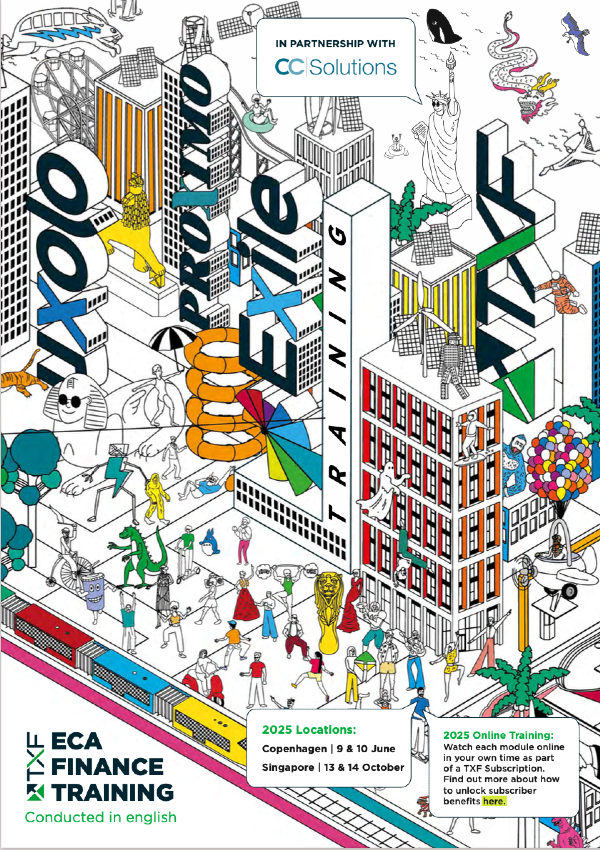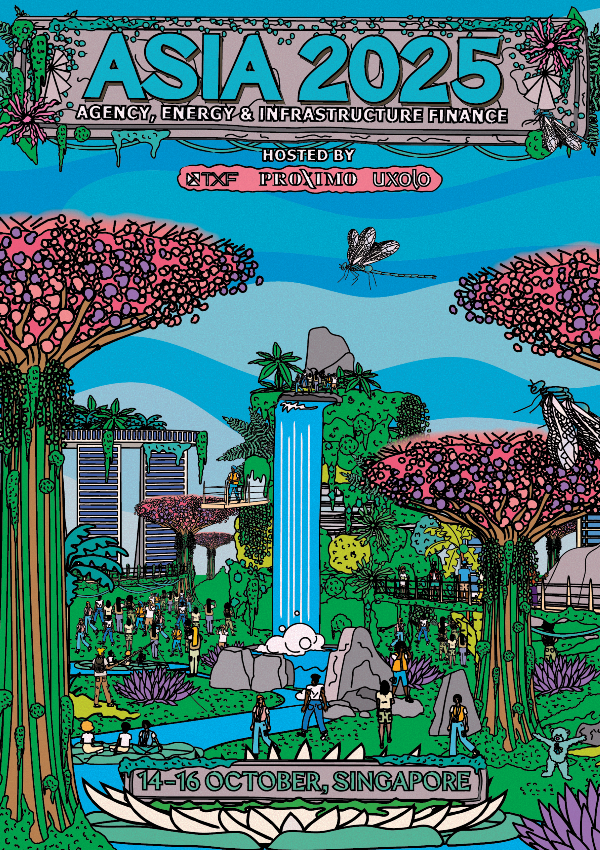Shop talk: HEXIM - A one-stop-shop kind of ECA
TXF sat down with Gergely Jakli, CEO and chairman of the board of directors at HEXIM, and Nikita Gusakov, CEO at EXIAR, to outline a landmark financing closed with Egyptian National Railways earlier this year, as well as what integrated ECAs have to offer as new one-stop-shops for export finance solutions.

Egyptian National Railways (ENR) raised the benchmark for big-ticket export finance collaboration at the end of 2019, after the state-owned company signed a €1 billion ($1.17 billion) dual ECA-backed buyer’s credit facility to back the procurement of 1,300 Transmashholding passenger coaches from the Russian supplier.
The more than 15-year financing, which involved three countries and marked the largest project in ENR’s history to date, will be provided between Hungary's HEXIM, the Hungarian Export-Import Bank and the Hungarian Export Credit Insurance that are operating in an integrated manner as the ECA of Hungary, and Russia’s Roseximbank, and the Russian Agency for Export Credit and Investment Insurance (EXIAR).
There were further complexities to the structuring of this deal though. In short, the buyer’s credit loan benefitted from HEXIM insurance while EXIAR reinsured the Russian debt portion stapled to the Russian content of the deal.
HEXIM is now a one-stop-shop for Hungarian exporters. While Hungary's ECA has two legal entities, from 2012 it has been working towards a fully integrated institution-pair with loans, guarantees, and insurances offered under one roof, as it strives to simplify access to export finance solutions for its exporters.
Closed in mid-March 2020, the deal was financed under Commercial Interest Reference Rate (CIRR), the price at which OECD ECAs can provide fixed-rate loans at any given month. This was good news for the Egyptian sovereign borrower as it has firmly added a new and attractive instrument to its financial toolkit. And regardless of the sugar-coated pricing this time round, the deal is set to serve as a viable financing template for future multi-ECA-backed further deals. Not just in Egypt either - but across Europe and the Far East.
TXF sat down with Gergely Jakli, CEO and chairman of the board of directors at HEXIM, and Nikita Gusakov, CEO at EXIAR, to outline the landmark features of the ENR deal, as well as what integrated ECAs have to offer as the new one-stop-shops for export finance solutions.
 TXF: What was the most interesting feature of this deal?
TXF: What was the most interesting feature of this deal?
Gergely Jakli (GJ): The deal was a large tender with state support (via a sovereign guarantee), a buyer’s credit facility based on the OECD Arrangement. The standout feature of this transaction is not only the amount [€1 billion] - but behind this you can see heavy industrial, and financial cooperation between the parties, that has a positive impact on the economy of each country involved in the deal.
It is unique because it will back the modernisation strategy of Egypt's rail infrastructure and coaches, as well as improving the country’s way of life. This is a huge development because ENR can modernise 37% of the railways and roll out 1300 new units.
As for Hungary, this is a new milestone in our foreign trade of vehicle industry, and the impact of the trade agreement and the related implemented investments on the Hungarian economy invigorates the complete export value chain. Therefore also fostering the advancement and development of potential Hungarian suppliers and all SMEs that are targeting to join it.
 Nikita Gusakov (NG): It is three countries and three jurisdictions. The project was started many years ago and there was a lengthy discussions between the Russians and Egyptians. We finally managed to put everybody together, both in terms of industrial cooperation between Hungary and Russia and also financial cooperation. So it's an exemplary deal in terms of how things can be done together.
Nikita Gusakov (NG): It is three countries and three jurisdictions. The project was started many years ago and there was a lengthy discussions between the Russians and Egyptians. We finally managed to put everybody together, both in terms of industrial cooperation between Hungary and Russia and also financial cooperation. So it's an exemplary deal in terms of how things can be done together.
There is a lot of similarity between our institution and HEXIM. But they are even more integrated than we are - basically one institution, but two legal entities. They have to take one credit decision. In our case, we are also very much integrated in terms of risk, legal system, legal work, and client work. In this respect we understand each other quite well.
In terms of the structure, it was all financing between HEXIM, which was taking the main part, and Exim Bank of Russia. In terms of covering the risk, it was about reinsuring part of the deal which is correlated to our Russian content. The most efficient way of doing that was for HEXIM to have full cover of their local agency, while sharing the risk with us.
TXF: What was the main motive for the participation of Roseximbank and EXIAR in the deal together with the Hungarian ECA? And, how did HEXIM and EXIAR structure their cooperation?
GJ: The main motivation was looking for the possibility to help promote our exporters. Hungary is a small country, and roughly 85% of our GDP comes from exports, with 80% of those exports going to the EU market, which means a huge concentration. For the evolution of ECAs, we have to learn how to cooperate with each other, with commercial banks, and with Development Finance Institutions (DFIs) in order to boost our exports as an international financial institution. We had a similar deal with the Indonesian State Electricity generation company and distribution monopoly PLN in 2016 where HEXIM and EDC (Export Development Canada) partnered for the first time to co-finance PLN's development in the form of purchase of eight GE-supplied mobile power plants. There have also been big deals with the involvement of other ECAs in Ghana, and also several deals in cooperation with US Exim was concluded earlier.
However, after these previous cooperations with other ECAs, this was the first project when HEXIM acted as the agent of the financial consortium. This was a big inroad we had to take in order to get more involved in the international market. We’ve learnt a lot, and all indications are that we have successfully completed this challenge.
NG: The main motivation for us was to support the Russian producers and for Hungary to support Hungarian producers, and to share the risk because the deal is big (in debt volume) and long (in tenor). This brings a lot of pressure on the capital of any ECA, so sharing this risk between ourselves was beneficial for both of us.
The main advantage was that Hungary, being a European country, can provide cheap, euro financing, which Russian banks would not be able to provide in such sizes. Some Russian banks are quite liquid, but providing a 14-year euro loan without access to EIB liquidity is more challenging for us.
So we were able to combine the possibilities and availability of European funding with our risk appetite that we have for Egypt on the financing side. On the industrial cooperation side, you have the benefit of the Hungarian and Egypt tax regime and also the National Corporation, in having a large Russian producer transmit holding using local Hungarian subcontractors and doing some of the assembling in Hungary. So it’s a positive impact on both countries economies. For Hungary, it is very important for their machinery industry and is beneficial in terms of financial cooperation for both of us.
TXF: Was EXIAR’s support only achieved via the reinsurance agreement? And will this deal be held up as a viable financing template for future deals, with further ECA collaboration going forward?
GJ: Yes, and yes. Acting as the agent of the deal was a new role in our operation, and it will be held up as a viable template for future deals. Regarding that HEXIM has a bank and an insurance company working as a fully integrated institution from 2012, and we are able to handle and provide the complete financial solutions for our exporters. Banks and insurance companies operating separately is commonplace in export finance, but we are some of the few ECAs in the world with both. We can organise financing and insurance in one place. For example, we only have one credit committee and one advisory board. So - our committee can decide as a bank and an insurance company, as well.
In this transaction, HEXIM organised the financing – with Rosexim’s co-financing – and covered the deal, while EXIAR provided reinsurance or cover to the Russian portion for the Russian content. We both [HEXIM and EXIAR] hope for plenty more cooperation going forward.
NG: In short, yes. We have had previous experience on working with other ECAs in different projects. We had cases where we work through reinsurance with major ECAs - Asian, European, CIS and other countries. And we also have experience in co-financing, where Russian banks would use our cover instead of international banks coming with their own ECA support. We have the flexibility in using different structures, whichever suits a particular transaction, whatever is required to make the deal happen.
TXF: Does this mean you have a more flexible and speedy due diligence process?
GJ: Typically, ECAs separate lending from insurance, but there are a few institutions that operate in a merged or integrated way, like HEXIM. Companies can trust and be confident in our offering under one roof. There are no two credit committees for us, and decisions are made quickly based on eligibility requirements.
TXF: How attractive was the pricing on the deal? And what was the tenor?
GJ: As I mentioned, we adhered to the OECD Arrangement. As a bank, we can use CIRR and the pricing is on those terms. In Hungary there is an interest rate equalization system ensured by the government that provides the possibility to use CIRR.
The national economic impact is key for every deal. For example, every project where the state support is below the national added value (or economic impact), we can use the minimum pricing based on CIRR.
NG: The CIRR rate was locked in at the time of signing of the facility which gives quite an attractive pricing for the Egyptian economy. It was signed before Covid before all the emerging market prices went up. The premium was also paid up front, which is usual for us in both project financings and buyer’s credits.
We are flexible in terms of the approach. We can either provide financing for the premium or the premium can be in a long term project finance structure. We don't usually defer the premium, but sometimes we give some flexibility to pay in instalments within the disbursement period, depending on the structure.
TXF: What was the greatest challenge in getting this deal across the financial line? And how did you overcome these hurdles?
GJ: It was a huge and complicated deal with three different participants, but we have a buyer’s credit in 44 countries - and every time there were challenges we managed them together.
TXF: ECA collaboration is often touted as the key to taking a more holistic approach to project financings. But other than reinsurance agreements, how can ECAs increase joint cooperation on deals?
GJ: We have a lot of negotiations with other ECAs and, generally, we have strong relationships with them. In these potential cooperations we also have a special position as we can organise financing and insurance, as well. We have a particularly healthy connection with other ECAs such as: EDC, US Exim, EXIAR, and Turk Exim.
In the African market for example, there are some Turkish companies that organise large infrastructure developments - and if those respective EPCs, across transport, water, power, and agriculture - use Hungarian goods and tech, then we have the possibility to get involved in the financial arrangement of the deal. Furthermore, the Americas and the Far East have been using Hungarian content. And other ECAs need to know HEXIM can extend cover for the national content.
TXF: What is HEXIM's minimum ECA eligibility requirement in terms of content?
GJ: The minimum eligibility requirement for HEXIM cover is 51% of national content. In Ghana, there is a project with overall volumes of more than €600 million. Only a small part was from Hungary ($85 million), and we could also cover that.
The min local content rules under the OECD Consensus needs modernising though. Hungary takes part in the work of the export credit working group of the EU together with other EU member countries, and HEXIM provides support for Hungary for such a representation. In the frame of this work, HEXIM supports Hungary in updating the OECD requirements on local content, and we hope there will be changes to the Arrangement over the next few years.
TXF: The conclusion of the deal occurred during the Covid-19 pandemic. Did the circumstances affect the final stage of the deal’s finalisation?
GJ: The pandemic overwrote the operation of the whole world, including the working of business life and contacts. Organising business trips for deal negotiations was tricky, yes. But HEXIM operates as a background institution of the Ministry of Foreign Affairs and Trade of Hungary, and we could lean on the support of its foreign stimulus system. There was a couple of weeks delay due to the pandemic but it didn't impact the deal too much.
NG: No, I wouldn't say it had much impact. Most of the things were done before, maybe we had a very small delay. Actually what is important is that the delivery of the railway is going ahead despite Covid.
Some of the deliveries are already sent to Egypt, so things are going according to the plan, despite all the issues and problems.
TXF: What are your expectations in respect of the effects of such a railway coaches supply contract on the economies of your country?
GJ: There are experienced transportation manufacturers in Hungary and the sector will help to boost the Hungarian economy significantly.
With Hungarian goods and tech, the railway coach manufacturer can use Hungarian suppliers. The railway companies decided to use other countries as the Hungarian supply chain provides to the EU market - and with this comes attractive export finance solutions. We are more than an ECA: HEXIM can promote export, economic growth, but also FDIs.
TXF: Is bended finance - specifically ECA/DFI-backed loans provided in tandem - paramount to opening up whole new supply chains and trade flows to HEXIM-backed projects going forward?
GJ: Exactly. That is the most important point in this project - there are three different countries and three different national interests, and through this project, we have helped development in every country. Egypt has rail coaches. Hungary has diversified its exports and product portfolio, stimulate the domestic supply chain, while attracted FDI, as well. If you strengthen exporters by financing, the supply chain of theirs also strengthen. It is just like a wave-effect: more Hungarian SMEs are positively impacted, as they have facilities to sell products and services to bigger Hungarian companies.
In Russia, one of the biggest private companies has just expanded its capacity by opening in the EU market. So in every international negotiation, we should ask: how can ECA activity be harnessed to up trade flows? But, the involvement of DFIs and commercial banks will most certainly help open new trade flows for Hungarian SMEs to new emerging markets.
The key to increasing blended finance between ECAs, DFIs, and commercial banks is incorporating the three entities. For example, US Exim has been rumoured to be merging with The United States International Development Finance Corporation (DFC) while Canada's ECA, EDC, already acts just like a development bank.
The challenge is, how can this be achieved? Well. DFIs and ECAs certainly need to create more joint national activities and this will in turn increase trade volumes.





